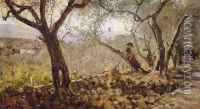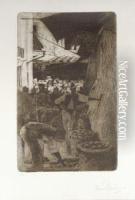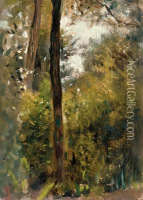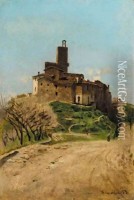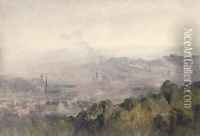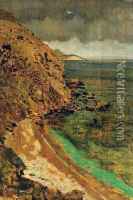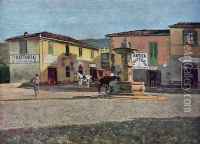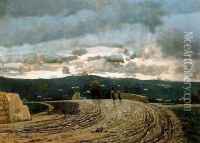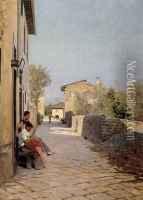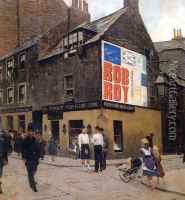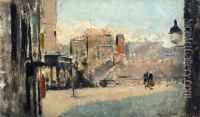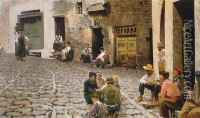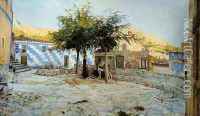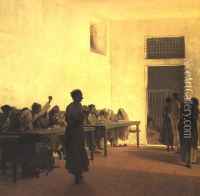Telemaco Signorini Paintings
Telemaco Signorini was an Italian artist known for his work as a painter and a key figure in the Macchiaioli movement. Born on August 18, 1835, in Florence, the heart of the Italian Renaissance, Signorini was exposed to art from an early age. His father, Giovanni Signorini, was also a painter, providing an environment that nurtured his artistic development.
Signorini's early work was influenced by the Italian tradition, but he soon became an integral part of the Macchiaioli group, which emerged in the 1850s. The Macchiaioli, akin to the French Impressionists, were interested in painting outdoors (en plein air) and focused on capturing light, shadow, and color in their work. They were called 'Macchiaioli' from the Italian 'macchia' meaning 'patch' or 'spot', due to their technique of using patches of color.
Throughout his career, Signorini was dedicated to portraying realistic scenes of everyday life, especially the lives of the working class and the poor. He often depicted the Tuscan landscape and the daily activities of its inhabitants. His interest in social issues was evident in his paintings, which combined a deep humanism with a profound understanding of light and atmosphere.
Signorini was also known for his travel and his keen interest in the international art scene. He spent significant periods in Paris, where he came into contact with the avant-garde movements of the time, and in London, where he was influenced by the works of contemporary English artists.
In addition to painting, Signorini was an art critic and writer, contributing to art discussions and debates of his time. He wrote articles and essays, which provided insights into his thoughts on art and painting techniques. His written works remain a valuable source of information on the Macchiaioli movement and 19th-century art.
Telemaco Signorini's legacy is marked by his contributions to the Macchiaioli movement and his influence on Italian art. His works are displayed in various museums and galleries around the world, celebrating his ability to capture the essence of life in Italy during his time. Signorini passed away on February 10, 1901, in Florence, leaving behind a body of work that continues to be admired and studied for its historical and aesthetic significance.
